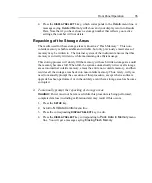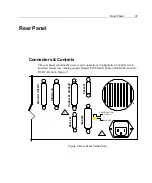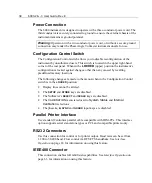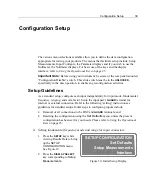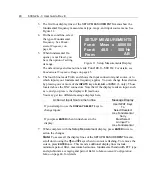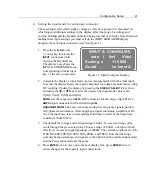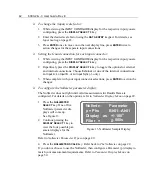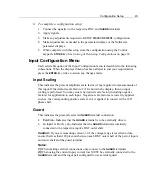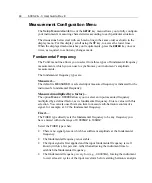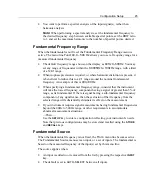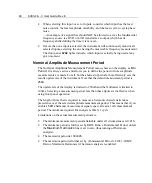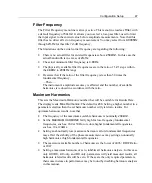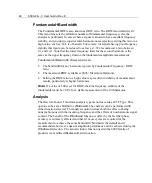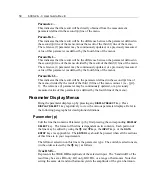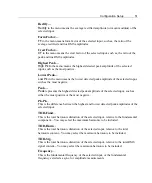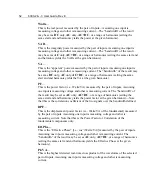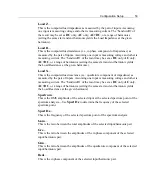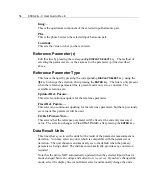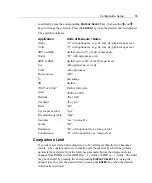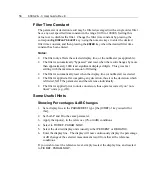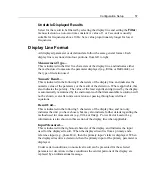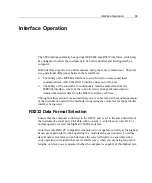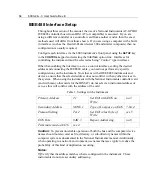
Configuration Setup
49
Fundamental Frequency Averaging
An accurate, noise free, measurement of the fundamental frequency is the basis for
any high-resolution phase measurement. Thus some averaging, or filtering of the
fundamental frequency measurement results, is desirable. However, averaging and
filtering slows the instrument’s response to changes in frequency.
•
The default is
med
.
•
For operation at frequencies above
10Hz
, the use of the
fast
or
med
selections
are recommended.
•
If the fundamental frequency is exceptionally noisy, or the ultimate in phase
accuracy is required, then use the
slow
selection.
•
For operation at low frequencies, such as 0.0005Hz, the
none
selection is
desirable. Otherwise the instrument may take more than one day to adequately
acquire the fundamental frequency.
Fundamental Frequency Measurement Period
The
FUNDAMENTAL FREQUENCY MEASUREMENT PERIOD
menu line sets the
base measurement period for the fundamental frequency measurement. Setting this
measurement to a longer period than the default of
250mS
, reduces frequency
measurement noise at the expense of a longer settling time.
•
A better reduction in frequency measurement noise can be achieved by using
longer fundamental frequency averaging.
•
Settings in the range of
0.25
to
1
are recommended for normal frequencies, with
longer periods being desirable for low frequency operation.
•
The actual minimum measurement period is 4 cycles of the lowest fundamental
frequency.
•
The maximum measurement period is 512 cycles of the highest fundamental
frequency.
Nullmeter Display Menu
Bring the
Nullmeter
menu up by pressing the
NULLMETER SELECT
key. To view the
four different Nullmeter parameter displays, press the
DISPLAY SELECT 1
key.
Nullmeter Parameter Types
The first line of the menu display shows the Nullmeter types. You can change the
types by repeated presses of the
DISPLAY SELECT 1
key. The Nullmeter’s results
show in the display.
Summary of Contents for Xitron 6000-2
Page 1: ...USER S GUIDE 6000 2 6000 3 Phase Angle Voltmeters...
Page 2: ......
Page 36: ...36 6000 2 3 User Guide Rev E...
Page 86: ...86 6000 2 3 User Guide Rev E...
Page 94: ...94 6000 2 3 User Guide Rev E...
Page 101: ...Appendix B 101...

